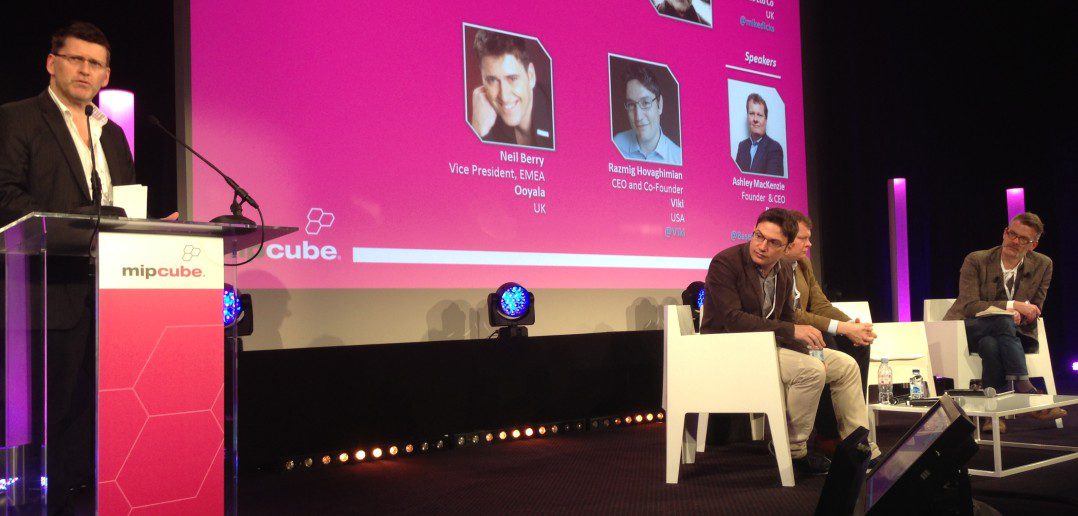Photo: Viki CEO/cofounder Razmig Hovaghimian, Base79 founder Ashley MacKenzie, Ooyala VP EMEA Neil Berry, moderator Mike Dicks, co-founder of Descience Ltd.
A number of new media platform execs today looked at distribution from a media perspective and proposed solutions for supplementing older, bulkier models.
Neil Berry presented Ooyala, which provides a consistent content experience across any device.
Ashley McKenzie then presented Base79. “We partner with content owners and make content ourselves, then distribute that content primarily on YouTube,” he explained.
“I think the world is changing massively, and it poses threats and opportunities for content owners,” Mackenzie observed. The days of watching things on one screen, or even two, is over: “that opens up a massive new world of opportunity for niche content.”
Finally, Razmig Hovaghimian presented Viki. Viki is a mix between “video” and “wiki”. They principally put Korean dramas online and let fans create subtitles for their own countries, opening markets for broadcast shows that they may never have considered.
Because broadcast is not going anywhere when you look at the stats, Hovaghimian said. In the US, “it’s still a $370bn market.”
But there are over 200 channels (the average TV watcher focuses on about 15), so the trick is either learning to stick out, or looking for new markets without spending too much money doing it — something Viki facilitates.
One of the most popular shows on its network, Playful Kiss, “flopped in its home country”. But online, and for certain markets, it’s a massive hit. It’s been subtitled in 57 languages by over 1400 fans around the world.
But demand for “primetime content” is global, and not just for English subtitles.
“There’s phenomenal content out there, if you find audience for it. You just have to find the right distribution platform,” said Hovaghimian.
Moderator Dicks asked the speakers how they felt about distribution as it relates to film and TV. Is that going away?
“I really think there’s room for everybody,” said Mackenzie. Acknowledging people’s fears about platforms like YouTube, which is watched with as much ardour as any TV channel, he said, “There are few examples where you can take a hit show and put it on YouTube, and it’ll be a hit show.” It’s a unique platform with its own content style. “The big channels on YouTube are generally native YouTube content.”
Berry emphasised an attitude of flexibility, like Miramax, which traditionally releases its rights and conducts lots of data experiments with its archived films. For example, it used a Facebook app to gauge what trending content was popular enough to be monetised.
“Have that flexibility to experiment with different business models” that permit you to do things the traditional, inflexible technologies don’t, Berry concluded.
“Online, distribution, in our view, is ubiquitous and free,” said Mackenzie. “We all have YouTube channels that cost nothing. Thinking about distribution is the wrong question. The real question is how do you build audiences. How do you get users at scale to aggregate around and consume your content? They’re there anyway and the distribution is free.”
“It’s how you reach audiences that’s going to change, and for me distribution is access,” said Hovaghimian. “You need to facilitate access.”




